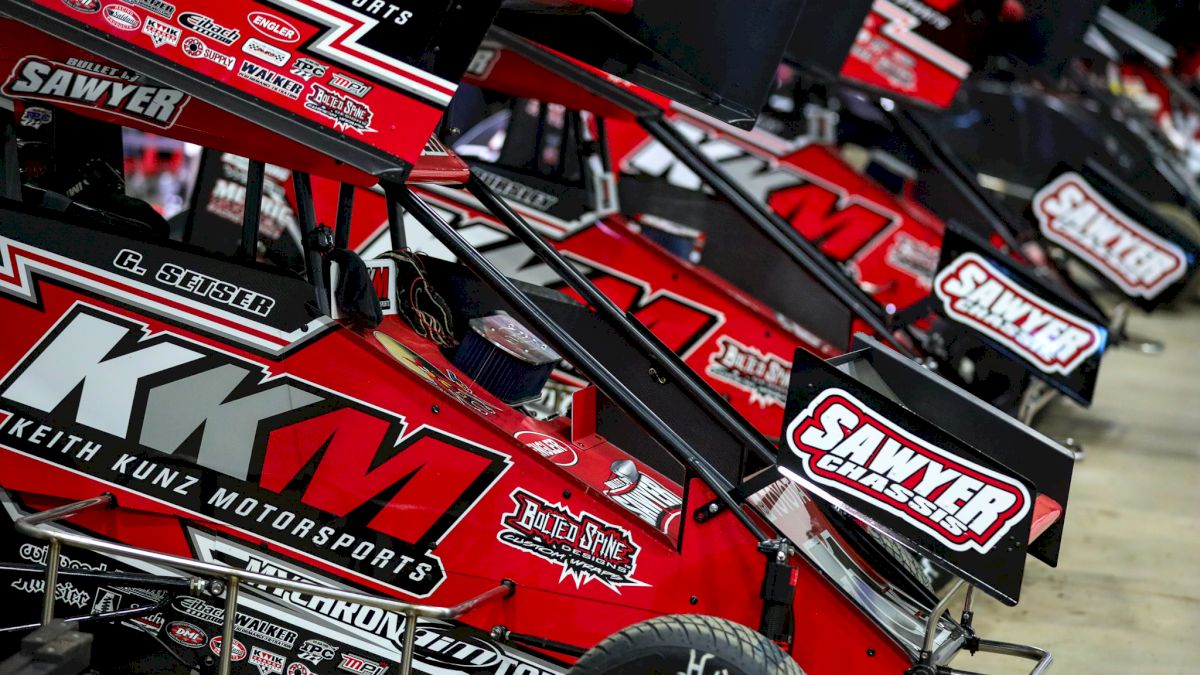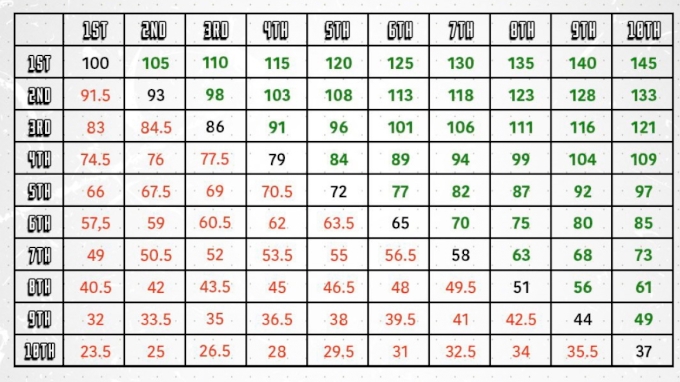Breaking Down the Lucas Oil Tulsa Shootout's Massive Format
Breaking Down the Lucas Oil Tulsa Shootout's Massive Format
With more than 1,200+ entries, the Lucas Oil Tulsa Shootout requires an effective agenda to whittle down to only 24 feature starters for each division.

With more than 1,200+ entries, the Lucas Oil Tulsa Shootout requires an effective agenda to whittle down gigantic numbers like 300 cars in one class to only 24 feature starters.
How do they do that? Passing points is the name of the game.
The four-day chase for a Golden Driller begins on Wednesday with opening heat races, continues through Thursday with more heats and a majority of semi features, heightens on Friday with the arrival of qualifiers, and concludes on Saturday with seven main events.
Watch the Lucas Oil Tulsa Shootout LIVE on FloRacing
It all begins with the pill draw, though. The field in every division signs-in and goes to draw for their starting positions in the heat races, which are 8 laps in distance. The four major divisions of Winged Outlaw, Outlaw Non-Wing, Stock Non-Wing, and A-Class will see anywhere from 25-30 heat races. Some will win from the pole; others will charge from 8th.
The easiest description of the passing points chart (below) can be broken down by position points AND then passing points. By position, drivers earn 100 for 1st – 93 for 2nd – 86 for 3rd – it’s a 7-point drop off per spot. Then, you add in passing points, which is +5 for any position advanced and -1.5 for any position lost.

Following heat races, the top 112 in passing points advance to eight qualifiers (14 cars each) with a four-car inversion in effect. That’s where the bubble gets more intense, with the top 32 point-getters involved in said inversion. Thus, high point man starts fourth in his qualifier with ample opportunity to gain more points. The hardcore cutoff is that line between 32 and 33, which is the difference between starting on the pole and starting fifth.
Those missing the cut for qualifiers are sent to C-Mains and D-Mains to begin their alphabet soup bid.
In qualifiers, which are often some of the most intense races of the week, drivers fight for more passing points. When it’s all said and done, only the TOP 16 in combined points will lock-in for the respective division’s main event. Drivers 17th-112th split into B-Mains, and from there, the Last Chance Qualifier sends the final eight drivers into the big dance.
Once the full 24-car field in each division is set, it’s game on come Saturday night. With the illustrious Golden Driller on the line, you never what to expect come main event time.
The action begins on Wednesday, December 30 with heat races and runs through the next four days until the 36th annual Lucas Oil Tulsa Shootout champions are crowned on Saturday, January 2. You can watch every lap all week long right here on FloRacing.
A full breakdown of the format for each division can be found below:
Outlaws, Non-Wing Outlaws, “A” Class & Non-Wing:
Heat Races lined up according to draw (7-9 cars per heat), passing points in effect.
Top 112 in passing points from Heat Races advance to 8 Qualifying Races (14 cars each) with a four-car inversion in effect for each Qualifying Race. Thus, high point driver from Heat Races will start fourth in the First Qualifier and so on (top 32 make invert – 33rd on back start third row and back in Qualifiers).
Passing points in Qualifying Races as well.
Top 16 in combined passing points from Heats & Qualifiers advance to Saturday night's A Main. Those 17th to 112th in combined passing points lock into 8 “B” Mains.
113th through 208th after heat races to eight (8) “C” Mains (in Outlaw Non-Wing, Stock Non-Wing and Winged “A” Class), balance to 6-8 “D” Mains depending upon car count, 113th on back in Winged Outlaw to “C” Mains. Top two from each “D Main transfer to “C” Mains, top two from each “C” Main transfer to “B” Mains, top two from each “B” Main transfer to Saturday night's A Feature Qualifier. B-Feature winners will be lined up first through eighth based on their combined Passing Point totals from Heats and Qualifiers. Drivers finishing second in the B-Features will occupy positions nine through sixteen with combined Passing Points used to set your starting position.
Top 8 from A Feature Qualifier advance to Tulsa Shootout Championship A Main event.
Restricted “A” Class:
Heat Races lined up according to draw (7-9 cars per heat), passing points in effect.
Top 60 in passing points from Heat Races advance to 5 Qualifying Races (12 cars each) with a four-car inversion in effect for each Qualifying Race. Thus, high point driver from Heat Races will start fourth in the First Qualifier and so on (top 20 make invert – 21st on back start third row and back in Qualifiers).
Passing points in Qualifying Races as well.
Top 16 in combined passing points from Heats & Qualifiers advance to Saturday night's A Main. Balance to "B" Mains along with 61st on back from heat race passing points. Top two or three finishers (depending upon car count) from each B Main to Saturday night's A Feature Qualifier.
Top 8 from A Feature Qualifier advance to Tulsa Shootout Championship A Main event.
600cc Modifieds:
Heat Races lined up according to draw (7-9 cars per heat), passing points in effect. Like number of qualifying races with inversion of four with passing points once again. Top 14 in combined passing points to Saturday “A” Main, balance to two “B” Mains with three advancing from each.
Jr. Sprints:
Heat Races lined up according to draw (7-9 cars per heat), passing points in effect.
All cars to 6 Qualifying Races (10-12 cars each) with a four-car inversion in effect for each Qualifying Race. Thus, high point driver from Heat Races will start fourth in the First Qualifier and so on (top 24 make invert – 25th on back start third row and back in Qualifiers).
Passing points in Qualifying Races as well.
Top 12 in combined passing points from Heats & Qualifiers advance to Saturday night's A Main. Balance to "B" Mains with top two finishers from each of the four B Mains to Saturday night's A Main.